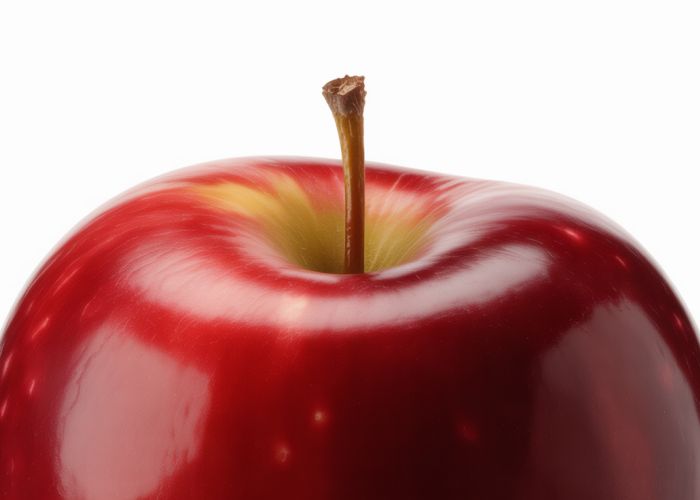Malus domestica, the common apple tree cultivated globally, provides the fruit central to understanding the apple fruit definition. The USDA provides detailed nutritional information on apple varieties, which helps to clarify what constitutes the nutritional value of the fruit described in the apple fruit definition. Botany, the scientific study of plants, is instrumental in defining the characteristics of an apple and solidifying the apple fruit definition. Understanding the Rosaceae family, to which the apple belongs, provides critical context for a complete apple fruit definition, encompassing aspects of its genetic heritage and botanical properties.

Crafting the Perfect "Apple Fruit Definition: Everything You Need to Know!" Article Layout
To create a compelling and informative article around the keyword "apple fruit definition," a carefully structured layout is crucial. The aim is to clearly define what an apple fruit is, explore its characteristics, and provide comprehensive details for readers seeking detailed information.
Introduction: Hook and Definition
- Hook: Start with an engaging opening. Perhaps a surprising statistic about apple consumption or a brief history of the fruit’s significance. Consider a short, captivating anecdote.
- Define "Apple Fruit": Immediately introduce the core term, "apple fruit." Provide a concise, plain-English definition of what an apple is from a botanical perspective. Emphasize it’s more than just a tasty snack.
- Article Overview: Briefly outline what the article will cover (e.g., botanical classification, nutritional information, varieties, and common misconceptions).
Botanical Definition of an Apple
- The Pome Classification: Explain that apples are classified as pome fruits.
- What makes a pome a pome? (Fleshy part derived from the hypanthium or floral tube).
- Distinguish it from other fruit types (drupes, berries). Use visual aids if possible.
- Flower Structure and Fruit Development: Walk through the apple flower’s structure and how it develops into the fruit.
- Briefly describe the role of pollination and fertilization.
- Illustrate the different parts of the fruit (flesh, core, seeds) and their origins.
Nutritional Value of Apples
-
Key Nutrients: List the significant vitamins and minerals found in apples. Use a table format for clarity.
Nutrient Amount (per medium apple) Benefit Vitamin C X mg Immune system support, antioxidant Fiber Y g Digestive health, blood sugar regulation Potassium Z mg Blood pressure regulation, nerve function Antioxidants Variable Protects cells from damage, reduces inflammation -
Health Benefits: Discuss the scientifically supported health benefits of eating apples.
- Improved heart health
- Reduced risk of certain cancers
- Weight management
Common Apple Varieties
-
Categorize Apple Varieties: Group apples by characteristics (e.g., sweetness, tartness, texture).
- Sweet Apples: Gala, Fuji, Honeycrisp
- Tart Apples: Granny Smith, Braeburn
- All-Purpose Apples: McIntosh, Cortland
-
Detailed Descriptions: Provide short descriptions of several popular varieties. Include their taste profiles, best uses (eating raw, baking, sauces), and geographic origins.
Apple Fruit vs. Apple Tree
- Distinguishing the Fruit from the Tree: Clarify the difference between the apple as a fruit (the edible product) and the apple tree (the plant that produces the fruit).
- The Life Cycle: A brief overview of the apple tree’s life cycle, emphasizing when and how the fruit develops.
Common Misconceptions About Apples
- Addressing Myths: Debunk common myths or misunderstandings about apples.
- Are all red apples sweet?
- Are apple seeds poisonous? (Address the cyanide content in small quantities).
- Do all apples need to be refrigerated?
Growing and Harvesting Apples
- Ideal Growing Conditions: Discuss the climate and soil conditions necessary for successful apple cultivation.
- Harvesting Techniques: Briefly describe how to identify ripe apples and the best methods for harvesting.
- Storage: Explain how to properly store apples to prolong their freshness.
Uses of Apples Beyond Eating
- Culinary Applications: Beyond eating raw, explore how apples are used in various culinary applications.
- Juices and ciders
- Pies, crisps, and other baked goods
- Sauces and preserves
- Industrial Uses: Briefly mention other uses, such as apple pectin in food processing.
FAQs About Apple Fruit Definition
Here are some frequently asked questions to further clarify the apple fruit definition and related topics.
What exactly qualifies an apple as a fruit?
The apple fruit definition, botanically speaking, means it developed from the flower’s ovary and contains seeds. This aligns with how fruits are classified – as the mature ovaries of flowering plants. Apples are a prime example.
Is an apple technically a pome?
Yes, apples are classified as a pome. A pome is a type of accessory fruit, meaning some of the fleshy part comes from tissues other than the ovary. This doesn’t change the apple fruit definition, but specifies its development process.
What is the purpose of the seeds within an apple fruit?
The seeds inside the apple are crucial for reproduction. They contain the genetic material needed to grow new apple trees. The apple fruit definition implicitly includes its role in seed dispersal for the plant.
Does the color of an apple affect its apple fruit definition?
No, the color of an apple does not change its definition as a fruit. Regardless of whether it’s red, green, or yellow, if it developed from the ovary of the apple flower and contains seeds, it fits the apple fruit definition.
So, now you know the ins and outs of the apple fruit definition! Hopefully, this article cleared things up and you can now impress your friends at the next fruit salad gathering! Happy snacking!